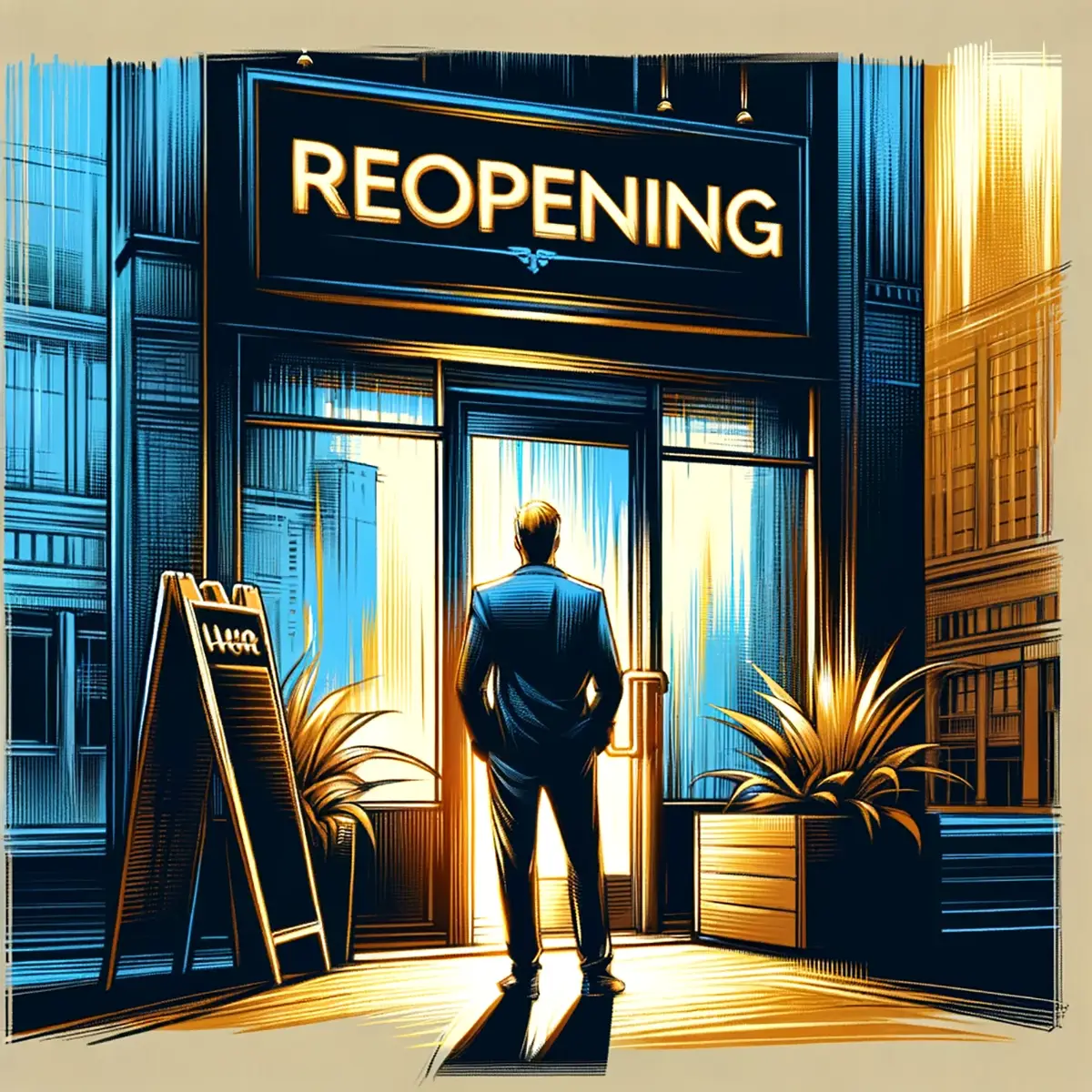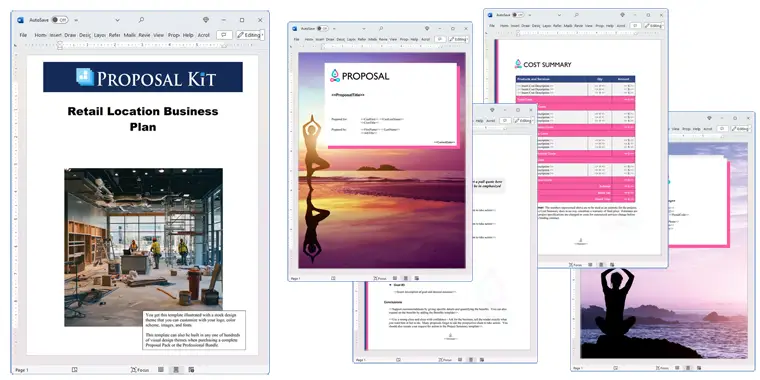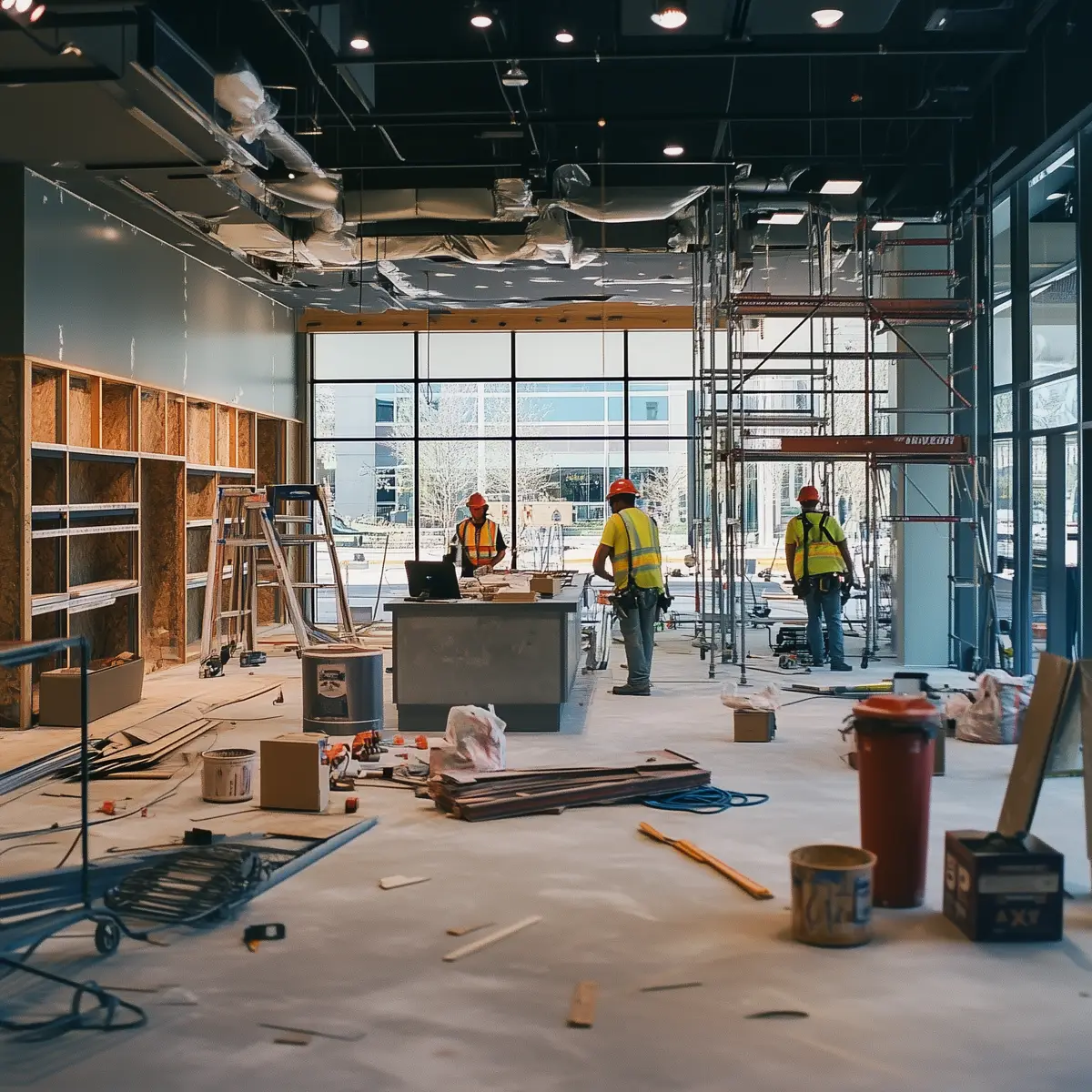How to write your Retail Location Business Plan
We include this 24 page layout with every Proposal Pack. If you want this template to have a different visual design theme than the one illustrated here, purchase any Proposal Pack design and create this template using the purchased design theme. This template is included in every Proposal Pack. If you get a Proposal Pack or the Professional Bundle, you can also make any variation of this template with different chapters to suit your needs.
We typically include more chapters in the templates than most people will need to give everyone more variety in the chapters they may need. You can trim down a long template by removing pages you do not need or combining multiple chapter topics into one page.
 DOWNLOADABLE, ONE-TIME COST, NO SUBSCRIPTION FEES
DOWNLOADABLE, ONE-TIME COST, NO SUBSCRIPTION FEES![]() View Retail Location Business Plan Sample
View Retail Location Business Plan Sample
This sample proposal is based on the same layout as this template and is included in every Proposal Pack. The visual design of the templates will match whichever Proposal Pack design you purchase. To get this template in a different design theme than shown in the sample, purchase any other Proposal Pack design theme and this template will be included.
You can create an editable Word version of this sample in any design theme of your choice including branded to your logo.
 If you need this template on DVD media order from our Amazon shop.
If you need this template on DVD media order from our Amazon shop.
You can also create countless variations of this document to suit your needs using the included library of 2200+ chapters if ordering a Proposal Pack or Pro Bundle.
 What Our Clients Say
What Our Clients SayProposal Kit has been a great help for my technology consultancy. Over the last 2 years writing technical proposals has become a walk in the park. Short, concise, straight to the point."
Atech Consulting
Related Article
Related Video
Related Templates
- Strategic Business Map
- Restaurant and Bar Funding Proposal
- Business Plan
- Technology Business Plan
- Pharmacy Startup Business Plan Funding Proposal
- Business Plan to Restart Shuttered Business
- Popup Kitchen Investment Funding Proposal
- Feasibility Study for Business Startup
- Business Plan Funding Request Proposal
- Ranch Business Plan Funding Proposal
- New Office Location Business Plan
- Business Development Proposal
- Strategic Business Plan
- Medical Practice Startup Business Plan
- Strategic Plan
- New Sales Office Proposal
- Financial Funding Proposal Template
- Technology Strategy Analysis
- Internet Cafe Startup Funding Proposal
- Strategic Plan for Mobilization and Deployment of Project
- Small Business Seeking Funding for Land and Equipment
- Spa and Beauty Salon Partnership Proposal
- Business Loan Application Proposal
- Web Hosting Business Plan
- New Office Space Purchase and Relocation Proposal
- Bakery Business Startup Proposal Template
- Transforming Retail Business to Service Online Proposal
What's the Best Way to Write Your Retail Location Business Plan?
A proven solution for writing business plan funding proposals is using Proposal Kit's template library and Wizard software program. This system not only guides you through the creation of a comprehensive business plan but also incorporates a line item quoting database system for cost summaries, quotes, estimates, budgets, and other financial topics.
If you find yourself needing to write such a proposal for startup funding or other purposes, Proposal Kit is designed for you.
What Types of Projects Are Retail Location Business Plans Written For?
Retail business plans are created for various situations that seek to establish or expand physical locations. Such proposals are typically written for situations where funding from banks or investors is required. Here are examples of projects that may need a business plan:
- Opening a new retail store in a shopping mall
- Launching a boutique in an urban area
- Setting up a chain of kiosks inside supermarkets
- Renovating an existing retail outlet
- Expanding a franchise into new territories
- Establishing a flagship store
- Introducing a pop-up shop for the holiday season
- Moving a store to a more location
- Adding a caf within a bookstore
- Developing a co-working space with retail components
- Converting a warehouse into a retail center
- Opening a specialty store for niche products
- Creating a showroom for an online brand
- Building a retail space in a tourist area
- Setting up a farmers' market space
- Launching a small business incubator with retail spaces
- Developing a community marketplace
- Establishing a retail component in a hotel
- Converting a historical building into retail space
- Developing an interactive retail experience
Chapters this template is built with
Each retail business plan is unique so there is no one-size-fits-all premade template that covers every situation. However, the Proposal Kit template and software package lets you create custom business plans for any situation. Here's a starting point of chapters that can be tailored using Proposal Kit's extensive content library of thousands of chapters:
Cover Letter (Business Plan)
The Cover Letter acts as the gateway to your proposal, providing a personal touch by addressing the lender or investor directly. It sets the stage by introducing the retail location project, explaining its purpose, and briefly highlighting why it is a worthy investment. For a retail location, this letter might emphasize the potential for community impact, the unique shopping experience, or the anticipated customer base.
Executive Summary
This section encapsulates the essence of your retail business plan, distilling key topics such as the business idea, market potential, and financial highlights into a brief, impactful narrative. When used in a retail location, it should focus on the advantages, such as location benefits, target demographic, and innovative retail concepts that differentiate your store from competitors.
Competitive Analysis
Within the Competitive Analysis, you look into the landscape of existing retailers in your chosen area, identifying strengths and weaknesses. This chapter should underline how your retail location intends to leverage market gaps, outperform competitors, and meet consumer needs better. Use data and insights to strengthen your position, demonstrating a thorough understanding of the competitive environment.
Industry Trends
By discussing Industry Trends, you showcase your knowledge of the broader retail sector, especially those that could impact your location, like shifts in consumer behavior, technology adoption, or economic factors. Highlight how your retail location will adapt and thrive in these conditions, perhaps by adopting new technologies or aligning with emerging consumer values.
Market and Audience
Identifying your Market and Audience is crucial for a retail location. This section should describe your ideal customer, supported by demographic data, shopping habits, and preferences. Highlight how your retail location will target this audience with tailored product offerings and marketing strategies, ensuring alignment with their needs and expectations.
Marketing Plan
The Marketing Plan outlines how you will attract and retain customers. For a retail location, this involves strategies like local advertising, social media campaigns, and loyalty programs. Detail your approach to building brand awareness and engaging with the community, possibly through events or partnerships, to drive foot traffic and sales.
Time Line
A well-structured Time Line is important to demonstrate your planning capability. It should map out critical milestones such as securing permits, completing construction, and launching marketing efforts. Illustrate the path from securing funding to the grand opening, ensuring that potential investors understand the project's trajectory and its efficient execution.
Income Projection
Income Projection provides a forecast of your retail location's financial performance over a specific period. It's vital to present realistic and data-driven estimates, highlighting revenue streams and anticipated growth. In this context, emphasize seasonal variations, product sales cycles, and any factors influencing income, like local events or tourism.
Balance Sheet
Presenting a Balance Sheet gives stakeholders a snapshot of your retail location's financial stability. Detail your assets, liabilities, and equity, demonstrating fiscal responsibility and readiness for investment. Highlight how your retail location's financial foundation supports sustainability and growth.
Sources of Funds
In the Sources of Funds section, outline where your capital will come from, including investors, bank loans, or grants. For a retail location, explain any unique funding sources like community investment campaigns or retail partnerships, and discuss their benefits.
Uses of Funds
Provide a detailed breakdown of how the funds will be used to realize your retail location project. This should cover expenses like leasehold improvements, inventory procurement, and marketing initiatives. Transparency in financial allocation reassures investors of prudent and effective fund management.
Funding Request
The Funding Request clearly states the exact amount of capital you require and articulates how these funds will be in achieving your retail location's objectives. Be specific about how each dollar contributes to milestones and business success, such as construction phases or marketing blitzes.
Future Developments
Discussing Future Developments provides a vision of long-term growth or expansion possibilities. For a retail location, this might include plans to open additional stores, enhance the product line, or integrate new technologies. This forward-thinking approach helps to assure investors of the business's potential beyond immediate goals.
Services Provided
Beyond product sales, your retail location might offer Services Provided to enhance customer experience or drive additional revenue streams. This could include personal shopping consultations, workshops, or after-sales support. Clearly describe these services and their value to your customer base and business model.
Products
In the Products section, detail the range of items you intend to sell, highlighting their unique attributes and advantages. For a retail location, this includes sourcing strategies, product variety, and how these offerings meet customer needs and preferences.
Company Operations
Company Operations lays out the daily functioning of your retail location, from supply chain logistics to customer service protocols. Emphasize efficient management practices and operational excellence, ensuring a seamless shopping experience and optimal business performance.
Personnel
This chapter details the Personnel structure of your retail location, outlining roles, responsibilities, and required qualifications. Highlight the importance of hiring skilled staff for customer service, inventory management, and sales operations, ensuring a competent workforce aligned with your business values.
Strategic Position
Detail your Strategic Position to clarify your retail location's market stance and competitive edge. Discuss how your brand differentiates itself, whether through unique product offerings, exceptional customer service, or a niche market focus. This section should convey your insight and readiness to capitalize on opportunities.
Legal Structure
Describe the Legal Structure of your retail business to inform stakeholders of its ownership and governance framework, be it a sole proprietorship, partnership, or corporation. This section should ensure clarity and transparency in how the business is organized and operates within legal guidelines.
Officers and Board
Introducing the Officers and Board provides credibility and assurance to investors by showcasing the leadership behind your retail location. Highlight their expertise, experience, and previous successes, emphasizing how their guidance will drive business success and stability.
Mission Statement
The Mission Statement succinctly communicates the essence of your retail location's purpose and values. It should inspire confidence in stakeholders by aligning with the overall vision of delivering value to customers and contributing positively to the community.
Use cases for this template
Overcoming Location Challenges with Strategic Planning
The Challenge
As the owner of Urban Treasures, Maria dreamed of opening a boutique in an urban area known for high-fashion retailers and trendy shops. However, the intense competition made her hesitant. She needed a robust business plan to attract investors, but writing one seemed daunting without a clear format.
The Solution
Maria discovered Proposal Kit, a comprehensive tool that offered more than just templates. It provided a framework to present her ideas cohesively, ensuring that every topic of her boutique's potential was highlighted. The structured templates helped her focus on showcasing her unique fashion offerings and competitive pricing strategy.
The Implementation
With the Wizard software, Maria tailored her business plan to emphasize the boutique's distinctive fashion sense and market strategy. By integrating the software's line item quoting system, she detailed financial projections that instilled confidence in potential investors. She customized each section, from the Executive Summary to the Financial Overview, using the intuitive interface provided by Proposal Kit.
The Outcome
Using a polished and professional business plan, Maria impressed investors with her vision and financial acumen. She secured the funding necessary to launch Urban Treasures, successfully differentiating her boutique in the crowded city market. Her store has since become a sought-after destination for fashion-forward individuals.
Transforming a Warehouse into a Retail Center
The Challenge
John, a project manager at Warehouse Wonders, faced the task of turning an old, underused warehouse into a thriving retail hub. The challenge was compounded by a tight deadline to produce a persuasive proposal to secure stakeholder approval and funding.
The Solution
John turned to Proposal Kit for its straightforward approach to developing a detailed business plan. With the addition of an AI writing tool, he was able to quickly gather insights and structure his proposal efficiently. The plan needed to convey the vision of transforming the warehouse into a retail center that would attract diverse businesses and consumers.
The Implementation
Using the Proposal Kit templates, John defined the transformation strategy, complete with architectural plans and projected customer flow. The AI tool analyzed Warehouse Wonders' website content, helping John to articulate the project's alignment with company goals. His proposal included specific timelines, budget allocations, and anticipated revenue streams. Each section was created to emphasize the innovative topics of the project and its potential profitability.
The Outcome
John's proposal exceeded expectations, earning praise for its clarity and thoroughness. Stakeholders were convinced of the project's viability, granting the approvals and funding needed to proceed. The warehouse transformation commenced promptly, setting the stage for a retail revolution in the area, with John at the helm of a successful project execution.
Creating a Retail Experience for a Non-Profit
The Challenge
As a director at the non-profit Community Creations, Sarah was tasked with developing a retail space that would support local artisans by showcasing and selling their crafts. Her goal was to write an RFP to attract partners who could help bring this ambitious project to life.
The Solution
Sarah found her answer in Proposal Kit, which provided a variety of adaptable templates that communicated her vision. The templates allowed her to outline specific requirements and expectations for potential partners, ensuring that the mission of Community Creations was clearly understood.
The Implementation
Sarah used Proposal Kit to write an RFP that was concise and comprehensive. She detailed the kind of retail experience she envisioned, one that would empower artisans and engage the community. The software enabled her to include logistical details, anticipated challenges, and partnership opportunities. By clearly articulating the non-profit's objectives and the mutual benefits of collaboration, her RFP stood out among the rest.
The Outcome
Sarah's compelling RFP attracted several interested companies, each eager to contribute to the innovative retail space. The partnerships formed led to the successful launch of the retail environment, which has since become a vibrant hub for artisans to display their talents and connect with the community. Community Creations not only achieved its goal but also fostered economic growth and cultural enrichment in the area.
Conclusions and Recommendations
Creating an effective business plan is crucial for securing funding and ensuring business success. The flexibility and comprehensive nature of Proposal Kit's templates make it an invaluable tool for anyone starting the journey of writing a business plan for a retail location.
Also Known As
This template may also be referred to in different ways or be used in more specialized situations, such as:
- Retail Outlet Business Blueprint
- Storefront Plan
- Physical Store Proposal
- Business Location Strategy
- Retail Project Plan
- Shop Establishment Plan
- Store Deployment Plan
- Retail Site Proposal
- Business Venue Plan
- Retail Space Strategy
Abstract
 Creating a robust retail store business plan is important for navigating the competitive landscape of the retail industry. A successful retail business hinges on a strong retail business plan that encompasses key topics such as market analysis, sales strategies, financial planning, and customer engagement. Understanding market trends and consumer preferences allows business owners to create a business concept that resonates with target customers and differentiates them from direct competitors and indirect competitors alike. By addressing business operations, including store operations and daily activities, and considering factors like cash flow projections and initial inventory, entrepreneurs can manage cash flow and prepare for ongoing expenses.
Creating a robust retail store business plan is important for navigating the competitive landscape of the retail industry. A successful retail business hinges on a strong retail business plan that encompasses key topics such as market analysis, sales strategies, financial planning, and customer engagement. Understanding market trends and consumer preferences allows business owners to create a business concept that resonates with target customers and differentiates them from direct competitors and indirect competitors alike. By addressing business operations, including store operations and daily activities, and considering factors like cash flow projections and initial inventory, entrepreneurs can manage cash flow and prepare for ongoing expenses.
A well-written business overview should include a detailed market analysis and company description, providing insights into the local market and potential market share. By evaluating the competitive market and identifying unique selling points, business owners can establish a competitive advantage. The business structure, whether as a sole proprietorship, partnership, or limited liability company, should be clearly defined, along with management structure and staffing needs. A strong financial plan is crucial, as well as presenting financial statements such as income statements, profit and loss statements, and cash flow statements to outline the business's fiscal health and funding requirements.
To ensure future success, a retail business plan should incorporate sales forecasts and sales goals, outline online advertising strategies and in-store promotions, and explore community engagement through events. It should also address monthly costs, labor costs, and utility expenses. The plan must determine how much funding is necessary and present a clear funding request to potential investors, including angel investors and financial institutions. By incorporating supporting documents, legal documents, and an organizational chart, the plan becomes a living document, guiding the business toward sustainable living and expansion into new markets over the next five years.
 Proposal Kit's comprehensive template library and Wizard software program simplify the process of assembling a retail venture business plan. Offering customized templates and automated line-item quoting ensures that business owners cover important topics like cash flow management, inventory control, and sales systems. This tool aids in creating a detailed roadmap, transforming abstract retail business ideas into actionable plans that attract customers and secure investment.
Proposal Kit's comprehensive template library and Wizard software program simplify the process of assembling a retail venture business plan. Offering customized templates and automated line-item quoting ensures that business owners cover important topics like cash flow management, inventory control, and sales systems. This tool aids in creating a detailed roadmap, transforming abstract retail business ideas into actionable plans that attract customers and secure investment.
In creating a well-structured retail store business plan, it is imperative to provide a clear direction and address the various topics that contribute to a successful business. The retail industry is dynamic, with market changes and future trends constantly shaping how businesses operate. Understanding these shifts allows entrepreneurs to make informed decisions about their business structure, whether establishing a brick-and-mortar store or expanding into online stores.
A comprehensive business plan covers everything from store setup and location to daily operations and the management of customer service representatives. It outlines how to manage inventory, ensuring that stock levels meet customer demand while preventing loss.
 A key part of a well-written business plan is the products and services section, which should clearly describe the product range and highlight unique selling points. This section should also include product pictures to visually engage potential investors and customers. An effective plan also considers customer segments and the strategies to reach them, such as direct sales, email marketing, and offering discounts. By analyzing key competitors and market conditions, business owners can position themselves to increase sales and attract more customers.
A key part of a well-written business plan is the products and services section, which should clearly describe the product range and highlight unique selling points. This section should also include product pictures to visually engage potential investors and customers. An effective plan also considers customer segments and the strategies to reach them, such as direct sales, email marketing, and offering discounts. By analyzing key competitors and market conditions, business owners can position themselves to increase sales and attract more customers.
Startups must pay close attention to their finances, conducting a thorough break-even analysis to understand the startup costs and potential profitability. A solid financial plan includes cash flow projections, operational capabilities, and the identification of key members responsible for different business functions. Addressing short-term and long-term financial goals is crucial, as poor financial planning can jeopardize the business's future. By integrating an operations plan that covers day-to-day operations, labor costs, and utilities, businesses can track progress and adjust strategies as needed.
Proposal Kit serves as an invaluable tool for assembling these crucial components into a cohesive document. Its extensive content libraries and automated quoting features facilitate the creation of detailed and professional business plans. This helps business owners communicate their vision, whether they are launching a new venture or expanding an existing one. By providing a framework for analyzing operational capabilities and setting realistic sales goals, Proposal Kit helps entrepreneurs to succeed in a competitive market.
 A successful business is not just about having a good business plan; it also requires a strong team and the commitment to evolve with the industry. By engaging with community events and collaborating with business partners, retailers can foster a sense of connection and increase their market presence. During the first year of any new business, having a solid plan in place allows for adaptability and resilience in the face of challenges. With the right amount of guidance and resources, from managing salaries to investing in quality equipment, businesses can navigate the complexities of the retail sector and achieve sustained growth.
A successful business is not just about having a good business plan; it also requires a strong team and the commitment to evolve with the industry. By engaging with community events and collaborating with business partners, retailers can foster a sense of connection and increase their market presence. During the first year of any new business, having a solid plan in place allows for adaptability and resilience in the face of challenges. With the right amount of guidance and resources, from managing salaries to investing in quality equipment, businesses can navigate the complexities of the retail sector and achieve sustained growth.
A well-written business plan serves as the foundation for any retail venture, providing the blueprint needed to navigate the competitive retail landscape. The role of a store manager is in executing this plan, as they oversee day-to-day operations and manage the sale system, ensuring efficiency and customer satisfaction. Selecting the right store location is an important decision, influencing foot traffic and visibility, and it requires thorough research and planning.
The inclusion of a break-even analysis in the financial section helps business owners determine the break-even point, where total revenue equals total costs, ensuring that the business becomes profitable. For brick-and-mortar establishments, engaging in activities that complement in-store experiences, such as hosting events or partnering with other businesses, can enhance customer engagement and drive sales. Additionally, a strong emphasis on loss prevention strategies safeguards against inventory shrinkage, protecting the bottom line.
 When it comes to developing a business name, it should be memorable and reflective of the brand's identity and values. A detailed description of the products or services offered, including key items, helps to clearly communicate the business's value proposition. In today's market, incorporating eco-friendly practices can also appeal to environmentally-conscious consumers and align with emerging global trends.
When it comes to developing a business name, it should be memorable and reflective of the brand's identity and values. A detailed description of the products or services offered, including key items, helps to clearly communicate the business's value proposition. In today's market, incorporating eco-friendly practices can also appeal to environmentally-conscious consumers and align with emerging global trends.
Investing in e-commerce capabilities can expand a retail business's reach beyond its physical location, allowing it to tap into new markets and customer bases worldwide. To achieve this, businesses must ensure that their digital platforms are as robust and user-friendly as their physical stores. This dual approach requires collaboration with suppliers to maintain consistent product quality and availability, whether for home goods or other departments.
A well-rounded business plan should not only address short-term goals but also consider long-term strategies for growth and sustainability. By securing appropriate financing options, such as forming a limited liability company (LLC) to manage debt and liability, business owners can lay a solid foundation for future expansion. It's important not to forget the human element; employees are an important part of any successful retail operation, and their training and development should be a priority.
 As businesses deal with the realities of competition and market fluctuations, they must remain adaptable and open to innovation. Introducing new products and expanding product lines can keep the brand relevant and attractive to consumers. By understanding the background and expectations of their target market, retailers can position themselves within the global marketplace, ensuring their longevity and success.
As businesses deal with the realities of competition and market fluctuations, they must remain adaptable and open to innovation. Introducing new products and expanding product lines can keep the brand relevant and attractive to consumers. By understanding the background and expectations of their target market, retailers can position themselves within the global marketplace, ensuring their longevity and success.
Frequently Asked Questions
What are the key components of a retail business plan?
A retail business plan should include several important components to provide a comprehensive overview of the business strategy. These components typically include an Executive Summary, which outlines the main objectives and goals; a Competitive Analysis to understand the market landscape; a detailed Marketing Plan that specifies how you will attract and retain customers; and Financial Projections to demonstrate the potential return on investment. Each section is crucial in illustrating the viability and profitability of your retail location to potential investors or lenders. By thoroughly addressing each component, you can create a and convincing business plan.
How can I make my retail business plan stand out to investors?
To make your retail business plan stand out, you need to provide clear, detailed, and well-researched information that highlights your unique value proposition. Start by presenting a Executive Summary that captures the reader's attention. Follow this with in-depth Market Research and Competitive Analysis to demonstrate your understanding of the industry. Clearly define your Target Audience and Marketing Strategies, and present realistic Financial Projections. Including visual aids such as charts and graphs can also enhance your plan's appeal. Ensuring your plan is well-organized and professionally formatted with Proposal Kit templates can further impress investors.
What financial information is critical in a retail business plan?
Accurate and detailed financial information is crucial in a retail business plan as it provides insights into the business's potential profitability and financial health. Key financial sections should include Income Projections, which estimate future revenue and expenses; a Balance Sheet that offers a snapshot of your assets and liabilities; and Sources and Uses of Funds to show where your funding will come from and how it will be allocated. Additionally, a Funding Request should clearly state how much money you need and how it will support your business goals. These financial sections help reassure investors of your business's viability.
How can Proposal Kit help simplify the process of writing a retail business plan?
Proposal Kit simplifies the process of writing a retail business plan by providing customizable templates and a user-friendly Wizard software program. These tools guide you through the creation of each section, offering structured frameworks and prompts to ensure you cover all necessary topics. With Proposal Kit, you can select specific chapters that are relevant to your business, such as Marketing Plans or Financial Projections, and tailor them to suit your needs. This flexibility allows for a more efficient writing process, ensuring your business plan is both comprehensive and professional.
What common mistakes should I avoid when writing a retail business plan?
When writing a retail business plan, common mistakes to avoid include failing to conduct thorough market research, underestimating financial projections, and neglecting to address potential risks. It's important to provide realistic and data-driven insights into your target market and competition. Ensure your financial projections are based on sound assumptions to avoid misleading investors. Additionally, a well-rounded plan should acknowledge potential challenges and offer strategies to mitigate them. Using tools like Proposal Kit can help organize your thoughts and ensure all critical areas are covered, reducing the likelihood of these common errors.
15% Off Discount
![]() Add To Cart This Word Template Only
Add To Cart This Word Template Only
 Add To Cart Proposal Pack Spiritual #5
Add To Cart Proposal Pack Spiritual #5
 Add To Cart Proposal Kit Professional Bundle
Add To Cart Proposal Kit Professional Bundle
 4.7 stars, based on 846 reviews
4.7 stars, based on 846 reviewsProposal Kit chapters used in this template
Cover Letter (Business Plan), Title Page, Table of Contents, Executive Summary, Competitive Analysis, Industry Trends, Market and Audience, Marketing Plan, Time Line, Income Projection, Balance Sheet, Sources of Funds, Uses of Funds, Funding Request, Future Developments, Services Provided, Products, Company Operations, Personnel, Strategic Position, Legal Structure, Officers and Board, Mission Statement, Back Page
Included Calculator Spreadheets
These Excel calculator spreadsheets are included with this template. If you purchase a Proposal Pack or the Professional Bundle, these proposal pages are generated using an automated line-item database in the included Wizard software. The calculator spreadsheets are intended for use when purchasing only the static Word template.
Time Line Calculator, Income Projection Calculator, Balance Sheet Three Year Calculator, Funding Request Calculator
You use this proposal for
- General business proposal
- Non-technical proposal
- Service sales proposal
- Business plan, loan, investor funding proposal
- Construction, contracting, building proposal
- Medical, healthcare, wellness proposal
How to create this template with Proposal Pack Wizard
You can create this document using any of the logo-designed Proposal Packs. Pick any Proposal Pack with a logo design theme you like best; they will all work equally well. The Proposal Pack for Any Business is the pack with no extra added logos or colors - designed to be used plain or for you to customize with your logos and graphics.
The Proposal Pack design theme you purchase will determine the visual look of this template. The screenshot above only shows the plain generic design theme. Names and stories in examples are fictional; however, the templates are from real client use cases.
We include a library of chapters to be assembled based on your needs. All proposals are different and have different needs and goals. We designed Proposal Pack so you can customize the documents to suit your needs.
You will best create this document using the Proposal Pack Wizard - Expert Edition software to select this template and build it in the Proposal Pack logo design theme of your choice along with any desired customizations (such as adding additional chapters, removing unneeded chapters, changing the order of chapters, and importing your company logo). This template outlines a proposal for the described situation. Each user is responsible for typing in the actual content of the provided pages with their information to complete the proposal. Suggestions in the abstract may include features in higher-end packages and are facilitated by the selection of chapter templates to support the narrative of each proposal, which help guide the user in filling in the details.
You create this template using the Wizard software with an entire Proposal Pack library and software. We include the Expert Edition of the software in the Proposal Kit Professional bundle. Microsoft Word for Windows is required to use the customizing software. You can also edit Word document templates in other office software such as Word for Mac. We will assist Mac users in assembling complex templates for their first project if they do not have the required platform to run the Wizard software.
You only get the single assembled Word document if purchased as a stand-alone template. The individual template products include no other templates, samples, or software.
How to Build Templates Featured on Proposal Kit Website
Many people find the Proposal Kit website after searching for a specific proposal. Once you've purchased and installed the software, how do you build that template you found in the first place? This video shows you how to build any proposal you see on the Proposal Kit website.
Key Takeaways
- The Retail Location Business Plan is available as a ready-to-edit template.
- You can create unlimited custom variations of this template using a Proposal Pack or the Professional Bundle.
- Using a Proposal Pack or Professional Bundle, you can automate quotes and other financial pages with a line-item database.
- There are no ongoing subscription fees. You get lifetime unlimited use.
- We made Proposal Kit for freelancers, small businesses, and non-profits.
- Proposal Kit product content (templates, samples, software) is 100% written by humans.
 Ian Lauder has been helping businesses write their proposals and contracts for two decades. Ian is the owner and founder of Proposal Kit, one of the original sources of business proposal and contract software products started in 1997.
Ian Lauder has been helping businesses write their proposals and contracts for two decades. Ian is the owner and founder of Proposal Kit, one of the original sources of business proposal and contract software products started in 1997.By Ian Lauder
 Published by Proposal Kit, Inc.
Published by Proposal Kit, Inc.


 Cart
Cart


 Get 15% off ordering today:
Get 15% off ordering today: 

 Facebook
Facebook YouTube
YouTube X
X Search Site
Search Site